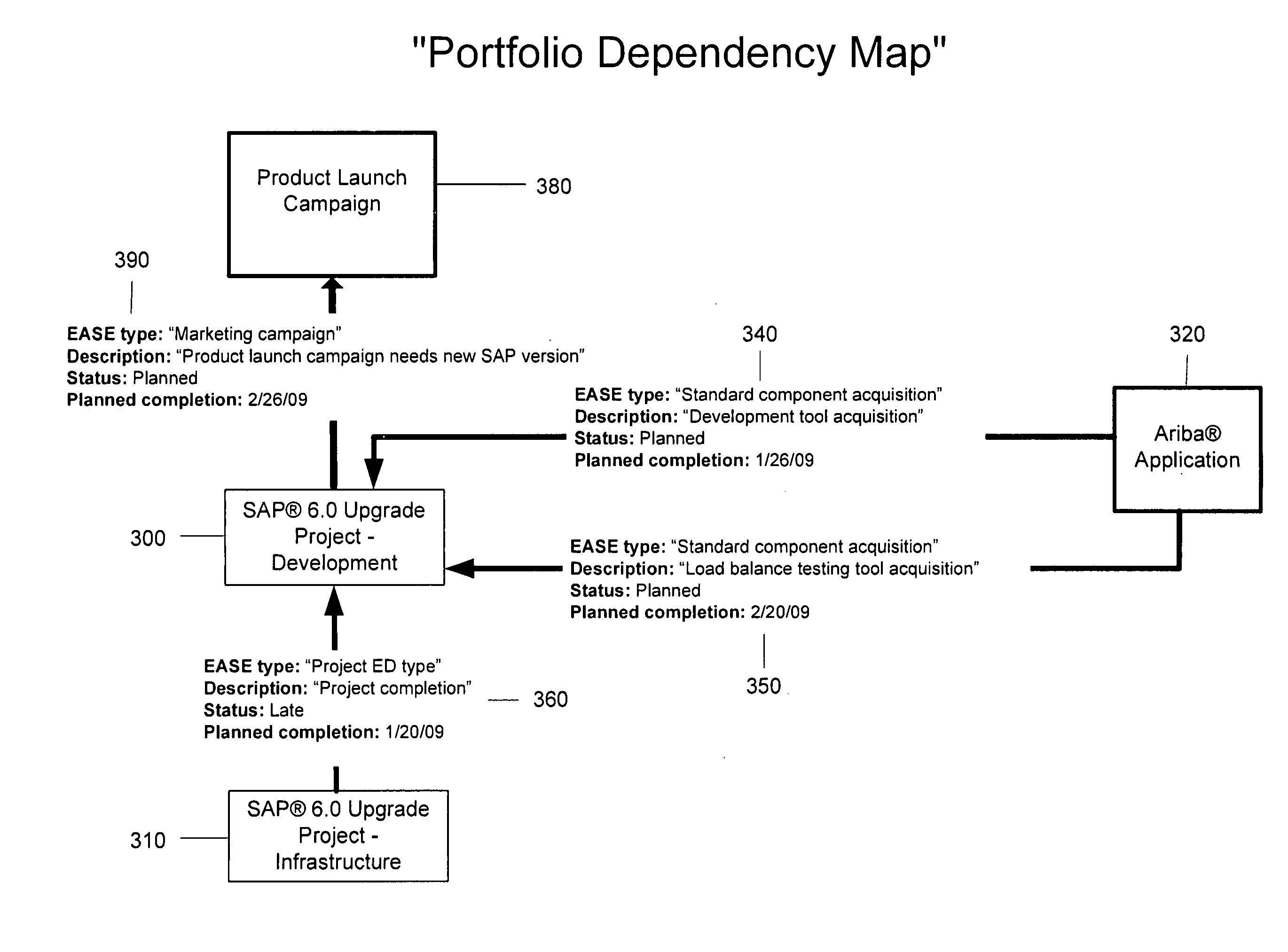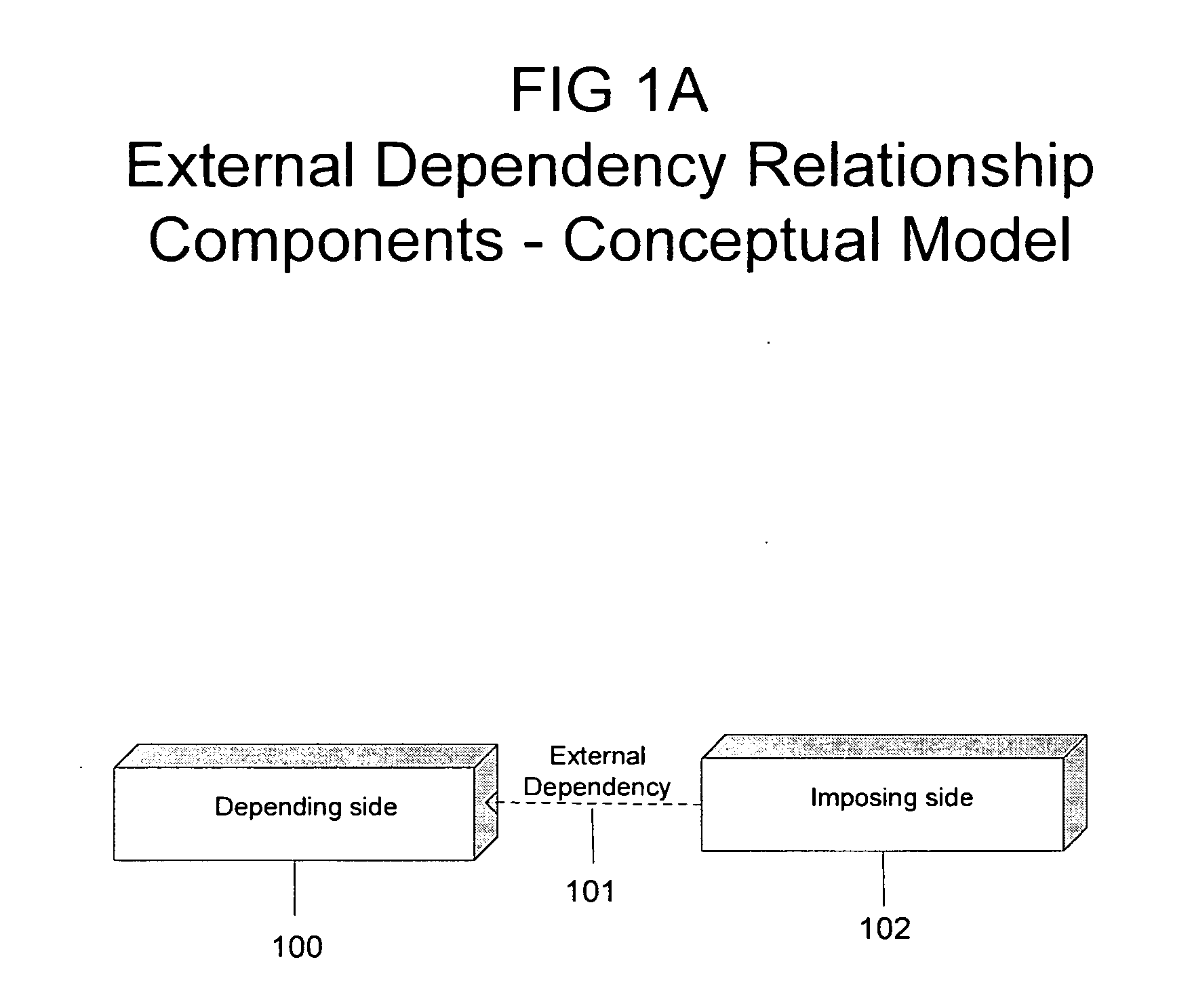Nevertheless, prior art has failed to propose consistent, flexible and comprehensive methods for management of EDRs associated with a project portfolio.
The absence of such methods impedes a number of primary PPM objectives, including alignment of project initiatives with organizational strategy, execution of the selected initiatives, and implementation of effective governance or control mechanisms for PPM activities.
A first outstanding challenge is PPM stakeholders' inability to use PPM methods to establish consistent rule-based associations between all data describing EDs—probabilistic or deterministic, hypothetical or concrete—and risk / benefit measures,
ranking criteria, or complexity assessment criteria of PCs such as projects or programs.
This missing element impedes the PPM stakeholders' ability to perform proper absolute or relative evaluations of PCs.
A second outstanding challenge is managers' inability to systematically incorporate EDR-related data into portfolio balancing criteria that are used to determine the mix of PCs with the greatest potential to collectively support the organizational strategy.
This limits the analysis of the organizational project portfolio from comprehensively reviewing how well the portfolio implements the corporate strategy.
A third existing challenge faced by organizations is the inability of current PPM methods to configure a centralized framework for management of EDR-related events and inferred situations through such means as a complex (composite) rules engine that incorporates desired business rules.
This limitation significantly slows down the organization's responsiveness to important PPM-related events and impedes the quality of actions taken in response to these events and inferred situations.
A fourth challenge is the inability of current PPM methods to establish a structured framework for attribute and process lifecycle management for different types of EDs associated with the project portfolio.
These limitations result in lack of proper accountability and control mechanisms, deviation from desired organizational behaviors, and wastage of resources.
A fifth challenge relates to limitations of metric assessment tools surrounding the planned, active, historical or hypothetical EDR-related data.
One such limitation is the inability of current PPM systems to evaluate the degree of
coupling among PCs or between PCs and activities external to projects in a managed portfolio.
The lack of this capability in current systems leads to several problems.
First, indirect external dependencies cannot be easily identified, which leads to serious execution problems that are often mishandled without the knowledge of where the emphasis should be put.
Second, PCs are often miscategorized since complete lists of their EDs—which are essential to proper grouping—are unavailable.
Third, without this analysis, the interdependencies among organizational departments and other entities that are responsible for managing EAs cannot be properly managed leading to an inaccurate allocation of resources, organizational design problems, etc.
A sixth challenge relates to the inability of existing PPM methods to effectively define, detect, warn or prevent creation of interdependency scenarios among PCs or between PCs and PPM-external EAs that create challenging or impossible situations.
Such scenarios include indirect cyclical references involving EAs that are PPM-external; long chains of dependencies imposed on a specific task; excessive number of different dependencies imposed on the same activity making it hard to complete it; or an excessive dependency of key activities on a single EA or its parent organization making it an organizational “
bottleneck”.
 Login to View More
Login to View More  Login to View More
Login to View More 


